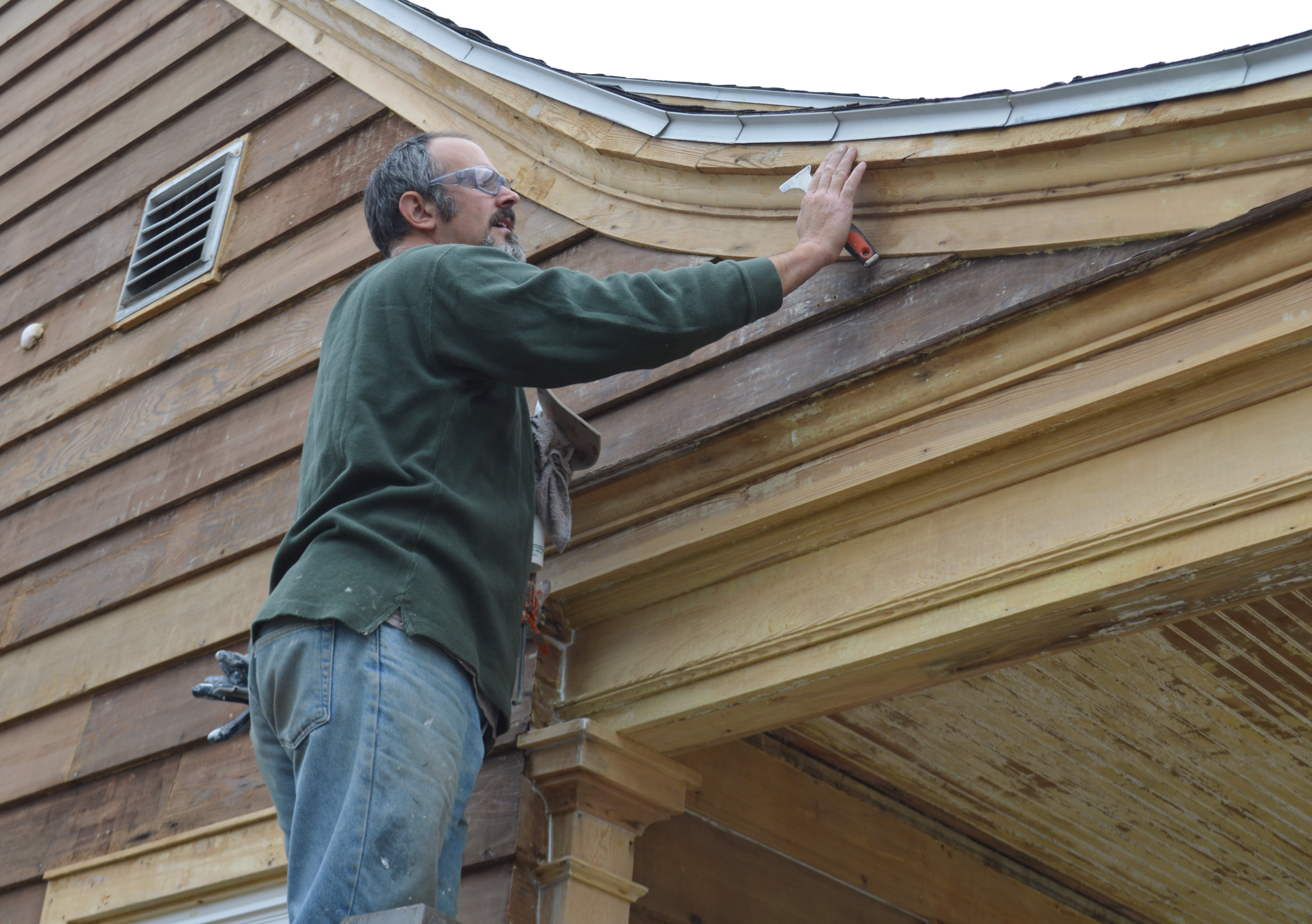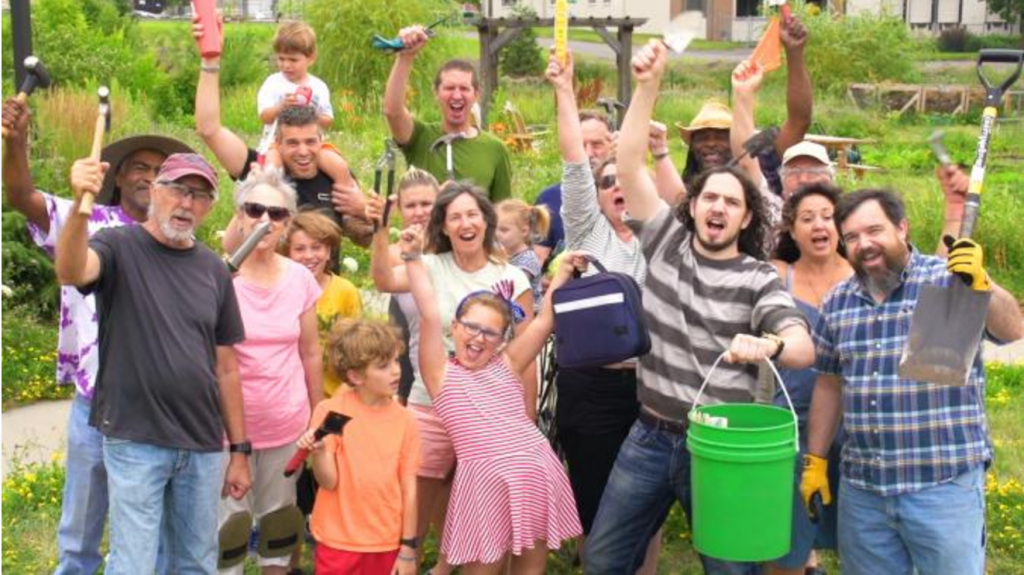The phrase “digital divide” is often used to describe the disparities in technology access between different groups; like the divide between young and old, urban and rural, and rich and poor. Naturally, the digital divide can influence many aspects of our lives, like where we get our news, what opportunities we can access, and the kinds of jobs we qualify for.
When it comes to community organizing and fundraising for neighborhood projects, digital divides can come into play in several ways. ioby works with people and organizations of all different kinds, all around the country; many of them have had to come up with smart ways to bridge (or work around) the technology gap as they crowdfund for community projects. We’re glad to share some of their most successful tactics here.
4 Ways Communities Can Bridge the Digital Divide
 [Volunteers at the Lake County Historical Society Museum House, in Baldwin, Michigan, crowdfunded nearly all the money they needed to replace the Museum House’s roof by check.]
[Volunteers at the Lake County Historical Society Museum House, in Baldwin, Michigan, crowdfunded nearly all the money they needed to replace the Museum House’s roof by check.]
1. “Check, please!” Don’t require that donations be made online
Don’t let the digital divide get your donors down. If someone who wants to contribute to your campaign doesn’t use credit cards or can’t pay online, they can absolutely write a check instead.
ioby Leader Success Manager Christina Webb reports that the following projects were funded mostly or entirely by paper check:
- Lewistown Parklet, Lewistown, Montana: $3,050. 100% funded by check!
- Lake County Historical Society Museum House, Baldwin, Michigan. Mostly funded by check.
- Pop Up Bike Racks, Helena, Montana: $3,050. 100% funded by check!
“A lot of our match projects, especially in less urban locations, also use checks,” Christina says.
Read more about crowdfunding via check on ioby’s website
 [In person events, like the one that the Saint Paul Tool Library held, can be a powerful way to add urgency to your crowdfunding and help close the digital divide.]
[In person events, like the one that the Saint Paul Tool Library held, can be a powerful way to add urgency to your crowdfunding and help close the digital divide.]
2. Live & in person: The power of events
While crowdfunding online is a great way to reach lots of people in different places, many ioby project leaders report that throwing a physical, real-time event in their neighborhood turned out to be their best fundraising tactic. Chatting face-to-face, versus screen-to-screen, is also a sure way to connect across the digital divide with people who don’t use the internet or social media.
John Bailey, the ioby Leader behind Minnesota’s Saint Paul Tool Library, on why bringing fundraising offline and into the real world can be so successful:
“We did a crowdfunding launch at a brewery in town, which was great for getting press, and we made a fair amount of money there. You’re almost by definition going to get supporters at an event like that. It’s good to get people to give when they’re excited in the moment, rather than give them time to think about it when they get home. We had iPads circulating around and encouraged people to just do it then, when they were surrounded by it—and enjoying a beer.”
3. Use online tools to organize offline work
Has time bank fever hit your town yet? Time banks are a wonderful way for communities to share their strengths by using time as currency instead of money. This Detroit-based project (like many time banks) bridges the digital divide by using online tools like crowdfunding and scheduling to support their on-the-ground work:
Keen to learn more? This video outlines the basics of starting a time bank where you live:
4. Not a digital divide—strengths on both sides!
Some project leaders have found success in seeing digital divides not as a line between two groups, but as a hint that twice the ideas, skills, and methods exist within their community to reach their goal.
Here’s a great example: the Brooklyn, New York project Going Green on Greene Ave employed the talents of both Henry Jackson, longtime neighborhood resident and block association leader, and Drena Howard, a newer arrival with experience in public and environmental health. Henry knew just about everyone in the area, which helped spread word of and support for the project quickly around the neighborhood. Drena took the reins of the online crowdfunding effort, reached even more donors, and exceeded the project’s fundraising target in just five days.
The digital divide is another form of inequality that we all have to reckon with today. But when we’re trying to get good done in our communities, it doesn’t have to be a barrier to success. When our number one goal is bringing our neighbors together around shared wins, we can work across divides of any size.
Are you ready to get some good done where you live? Tell us what you have in mind! We can help you get started.